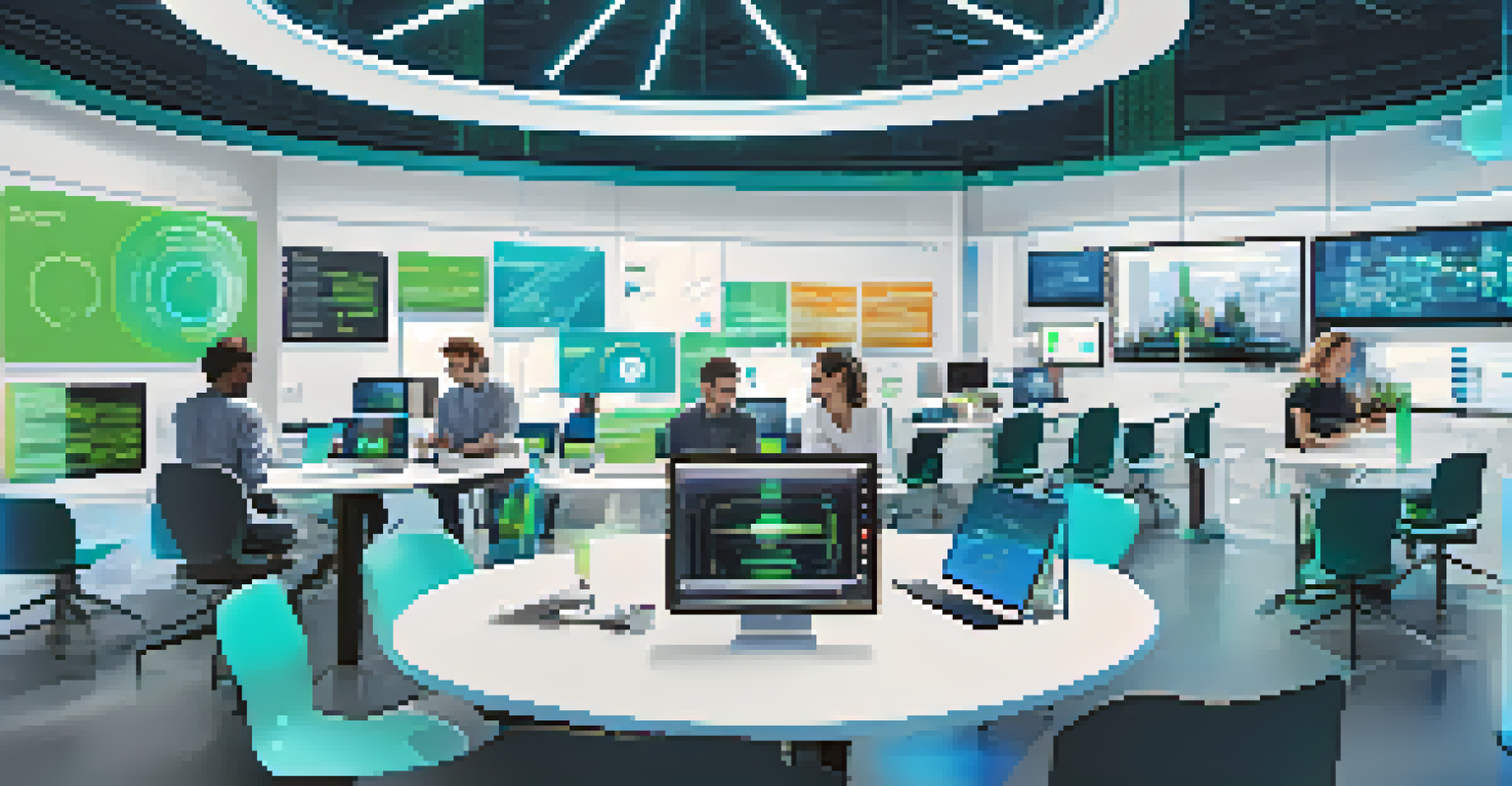User-Centric vs. Technology-Centric Development Approaches

Understanding User-Centric Development
User-centric development focuses on the needs and preferences of the end user. This approach involves gathering insights through user research, surveys, and usability testing. By prioritizing user experience, developers aim to create products that resonate with users on a personal level.
The user experience is the key to the success of any product, and understanding users is the first step in creating a product that resonates with them.
One of the hallmarks of user-centric development is iterative design, where feedback is continuously integrated into the development process. This ensures that the final product not only meets but often exceeds user expectations. Think of it like baking a cake: you taste and adjust the flavors before serving it to your guests.
By adopting a user-centric approach, teams can enhance customer satisfaction and loyalty. The more users feel understood and valued, the more likely they are to engage with the product, creating a stronger connection between the user and the brand.
Exploring Technology-Centric Development
In contrast, technology-centric development emphasizes the latest technologies and features over user needs. This approach often prioritizes innovation and technical prowess, leading to products that showcase cutting-edge capabilities. However, this can sometimes result in solutions that are impressive but not necessarily user-friendly.

Technology-centric development is akin to a chef creating a dish based solely on the availability of exotic ingredients rather than the preferences of diners. While the dish may be visually stunning, it might not be palatable for everyone. This highlights a critical pitfall: just because something is technologically advanced doesn’t mean it’s useful.
User-Centric Development Boosts Loyalty
Prioritizing user needs leads to higher satisfaction and stronger brand connections.
While this approach can yield groundbreaking innovations, it often risks alienating users if their needs are overlooked. As technology evolves rapidly, developers must balance their enthusiasm for new tools with the practicalities of user experience.
Key Differences Between Approaches
The primary distinction between user-centric and technology-centric development lies in their focus. User-centric development prioritizes the user’s needs and experiences, while technology-centric development focuses on the technology itself. This fundamental difference can significantly impact the product's success.
It's not about what you want to build, but about what your users want and need.
For instance, consider the evolution of smartphones. User-centric approaches led to intuitive interfaces and user-friendly features that appealed to a broader audience. Conversely, some brands launched devices with sophisticated technology that, while impressive, left users confused or overwhelmed.
Ultimately, understanding these differences is crucial for businesses aiming to develop products that resonate with their audience. A balanced approach that considers both user needs and technological advancements can lead to more successful outcomes.
Benefits of User-Centric Development
User-centric development offers numerous advantages, including increased user satisfaction and loyalty. By actively involving users in the design process, companies can tailor their products to meet real-world needs, fostering a sense of ownership among users. This involvement can lead to higher engagement and advocacy.
Additionally, user-centric approaches often result in fewer product revisions post-launch, saving time and resources. When user feedback is integrated from the beginning, teams can anticipate issues before they arise. Imagine a gardener who nurtures their plants with care; by paying attention to the needs of each plant, they cultivate a thriving garden.
Technology-Centric Risks User Alienation
Focusing solely on technology can result in impressive but user-unfriendly products.
Moreover, products designed with user input tend to generate positive word-of-mouth marketing. Happy users are more likely to recommend a product to their friends and family, creating a ripple effect that can significantly boost a brand's visibility.
Why Some Choose Technology-Centric Development
Despite the benefits of user-centric development, some organizations lean towards technology-centric approaches. This often stems from a desire to innovate or differentiate themselves in a crowded market. By showcasing advanced technologies, companies can attract attention and establish themselves as leaders in innovation.
Moreover, technology-centric development can lead to rapid prototyping and experimentation. Developers can push boundaries, creating solutions that may not yet have a clear audience. This sort of exploration can lead to breakthroughs, much like how some scientific discoveries happen by accident.
However, the challenge remains: without user insights, these innovations risk missing the mark. It's essential to strike a balance between innovation and usability to ensure that new technologies are embraced rather than ignored.
Finding a Balance Between Both Approaches
The most effective development strategies often incorporate both user-centric and technology-centric elements. By harmonizing these approaches, companies can leverage technological advancements while ensuring they align with user needs. This balance can lead to more robust and adaptable products.
For example, a software company might develop a cutting-edge application while continuously gathering user feedback to refine its features. This iterative cycle can produce a product that is not only innovative but also user-friendly and relevant. It’s like crafting a symphony where technology and user preferences play in perfect harmony.
Balancing Both Approaches is Key
Integrating user feedback with technological advancements creates adaptable and successful products.
Achieving this balance requires an open mindset and a willingness to adapt. Teams that embrace both perspectives can create a diverse product portfolio that meets varied user needs while staying ahead of technological trends.
Real-World Examples of Both Approaches
Several companies exemplify the user-centric approach, such as Apple. Their focus on intuitive design and user experience has garnered a loyal customer base. Apple devices are often praised for their simplicity and ease of use, demonstrating how understanding users can lead to success.
On the other hand, some brands, like certain tech startups, may initially chase the latest advancements without prioritizing user feedback. While they might attract attention with their innovative products, they can struggle to retain users if their offerings don’t address real pain points.

These examples highlight the importance of aligning development strategies with user needs. By studying successes and failures in the market, companies can learn valuable lessons about the impact of their chosen development approach.